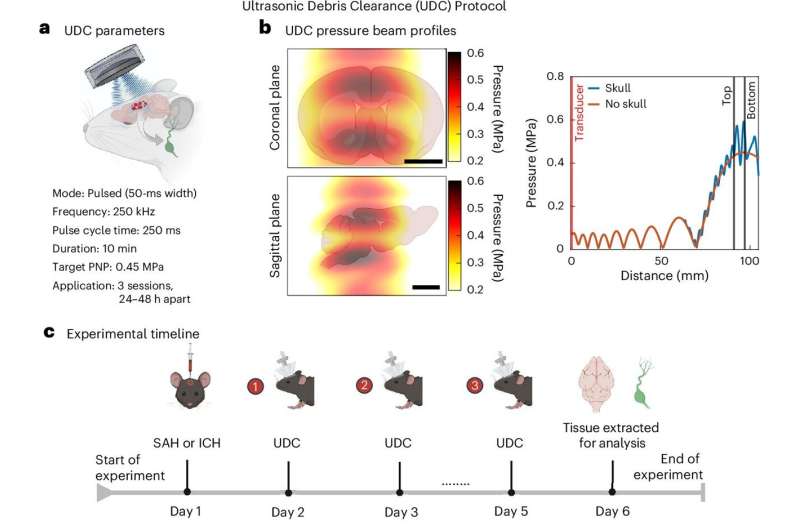If clinical trials in humans show similar positive outcomes, this method could offer a safe and simple way to treat hemorrhagic stroke—and potentially Alzheimer’s and other traumatic brain injuries—without surgery or drugs, the authors suggest.
When waste products such as blood cells or other debris build up in the brain, they can trigger inflammation and damage nerve cells. Impaired debris clearance has been linked to strokes, head injuries, and diseases such as dementia. Surgical approaches to hemorrhagic stroke can improve outcomes, but they are invasive and require rapid access to specialized stroke centers. Although drug therapies are being investigated, so far none have been approved.
Researcher Raag Airan from the Stanford University School of Medicine and colleagues designed an ultrasound therapy to enhance clearance of brain debris and tested it in two mouse models of hemorrhagic stroke (subarachnoid and intracerebral/intraparenchymal). The ultrasound treatment cleared more than half of the red blood cells from the brain and appeared to shuttle them to the deep cervical lymph nodes, which help remove waste products.

